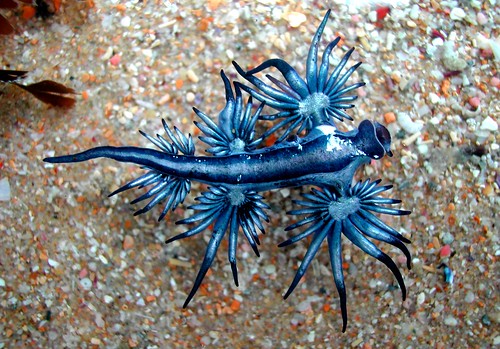
(Photo by paulhypnos)
Yesterday, we looked at a species of marine slug known as the blue dragon nudibranch, one that is seen quite often on reefs in Singapore waters. Today, my post will focus on a very different nudibranch that shares the same name.
If you thought nudibranchs in general were weird, the sea swallow (Glaucus atlanticus), sometimes also known as the blue sea slug, the blue dragon, or sea lizard, is truly one of the most bizarre. It's a small creature, growing up to 3 centimetres in length, and certainly isn't very slug-like in appearance. It does not crawl about on the seabed, but is pelagic, floating just beneath the surface in both temperate and tropical waters all over the world. The sea swallow has apparently been known to occur in Singapore, although these records most likely represent strays from the open sea.
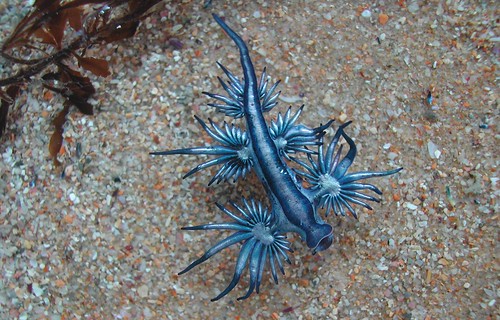
(Photo by paulhypnos)
The sea swallow swims upside down, so we are actually looking at its underside when seen from above.
Like many other nudibranchs, the sea swallow is a voracious predator, and preys on other pelagic organisms that drift at the surface. These include the violet snail (Janthina janthina), which creates a raft of air bubbles that enables it to float, the hydroids known as the blue button (Porpita porpita) and by-the-wind sailor (Velella velella), and even the large and dangerously venomous siphonophore popularly called the Portuguese man o' war (Physalia physalis). The sea swallow is immune to the venom secreted by the Portuguese man o' war, and simply slowly nibbles off pieces of its prey with impunity.
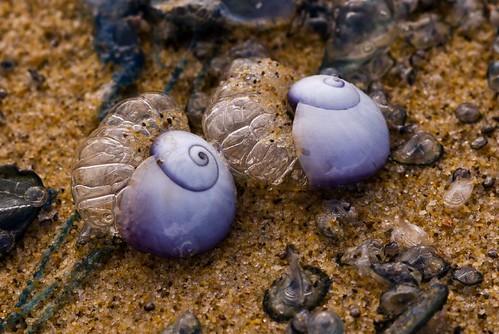
Violet snails stranded on the shore;
(Photo by tr1stero)
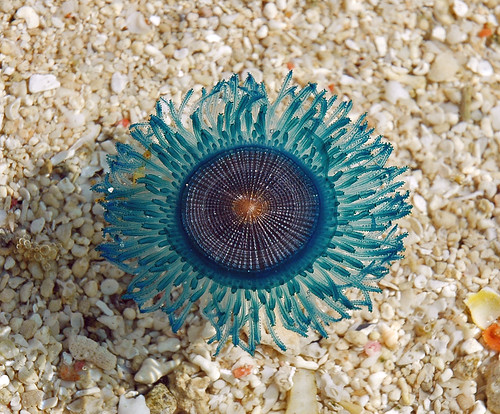
Blue button;
(Photo by paulhypnos)
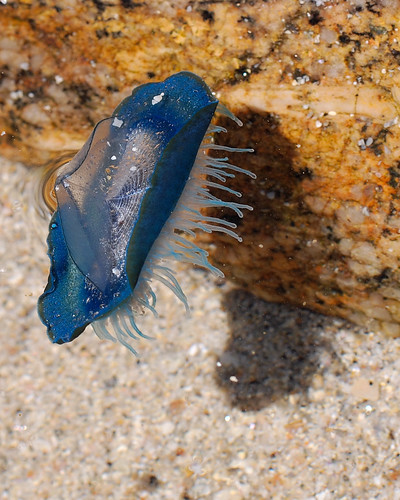
By-the-wind sailor;
(Photo by polandeze)
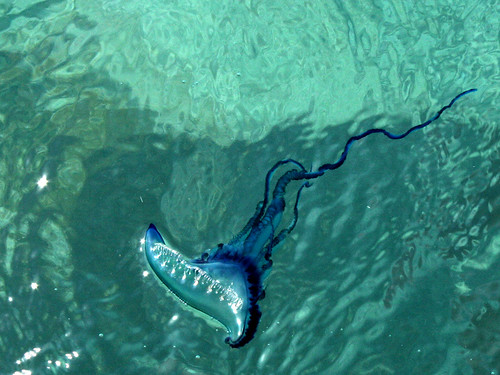
Portuguese man o' war;
(Photo by mcmillend)
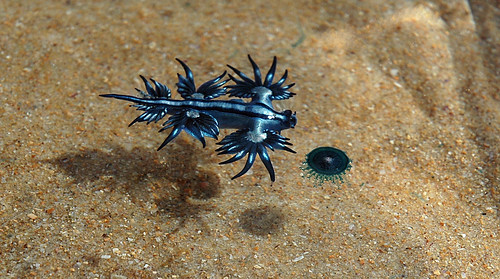
Sea swallow with blue button;
(Photo by paulhypnos)


Sea swallows attacking Portuguese man o' war;
(Photos by Scott and Jeanette Johnson, from Kwajalein Underwater)
Like many other nudibranchs, the sea swallow is actually able to select and store the cnidocytes (stinging cells) of its prey, which are collected in special sacs called cnidosacs at the tips of the cerata, the thin, fleshy projections on the body. As a result, the sea swallow has actually co-opted the stinging ability of its prey and used it for its own defence. Because the sea swallow selects and concentrates the most venomous cnidocytes in its cerata, it can actually cause stings more severe than the Portuguese man o' war itself!
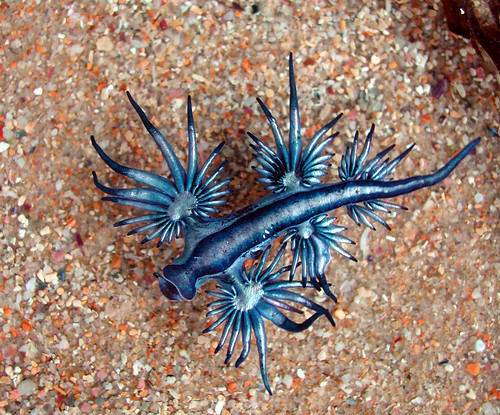
(Photo by paulhypnos)
While the sea swallow is able to swim, it is still very much subject to the vagaries of the weather and currents. For many beachgoers, their encounters with sea swallows typically involve stumbling upon those that are left stranded on the shore by strong winds or stormy weather.
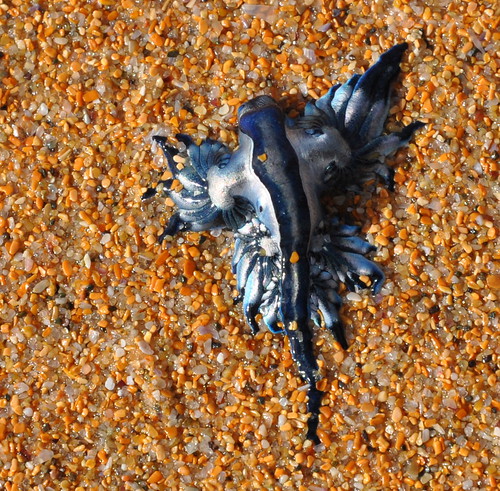
(Photo by Ann McLeod Images)
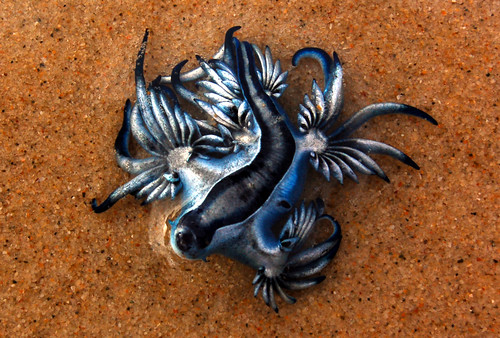
(Photo by mister fez)
Coming up next, some dragon-like fish.